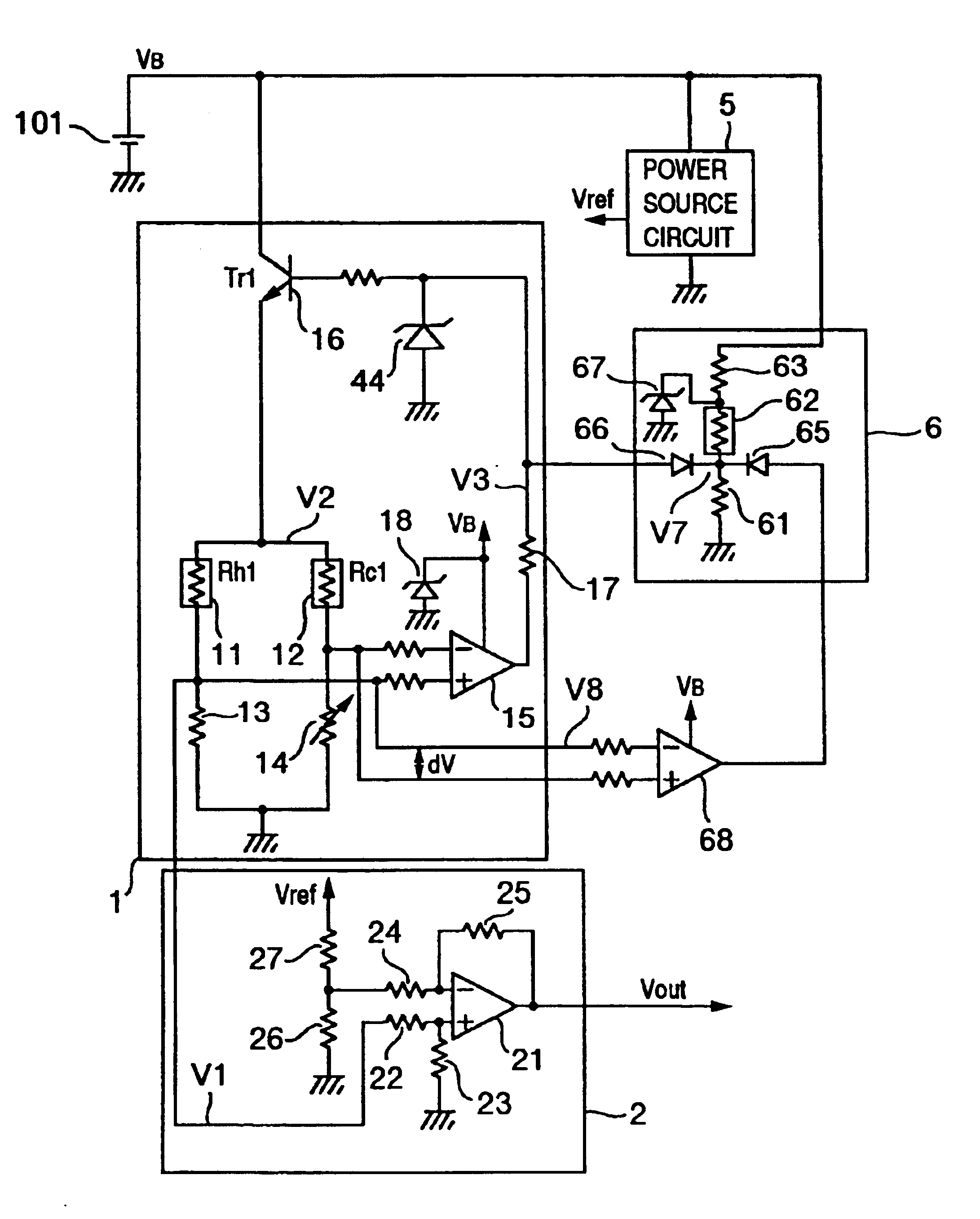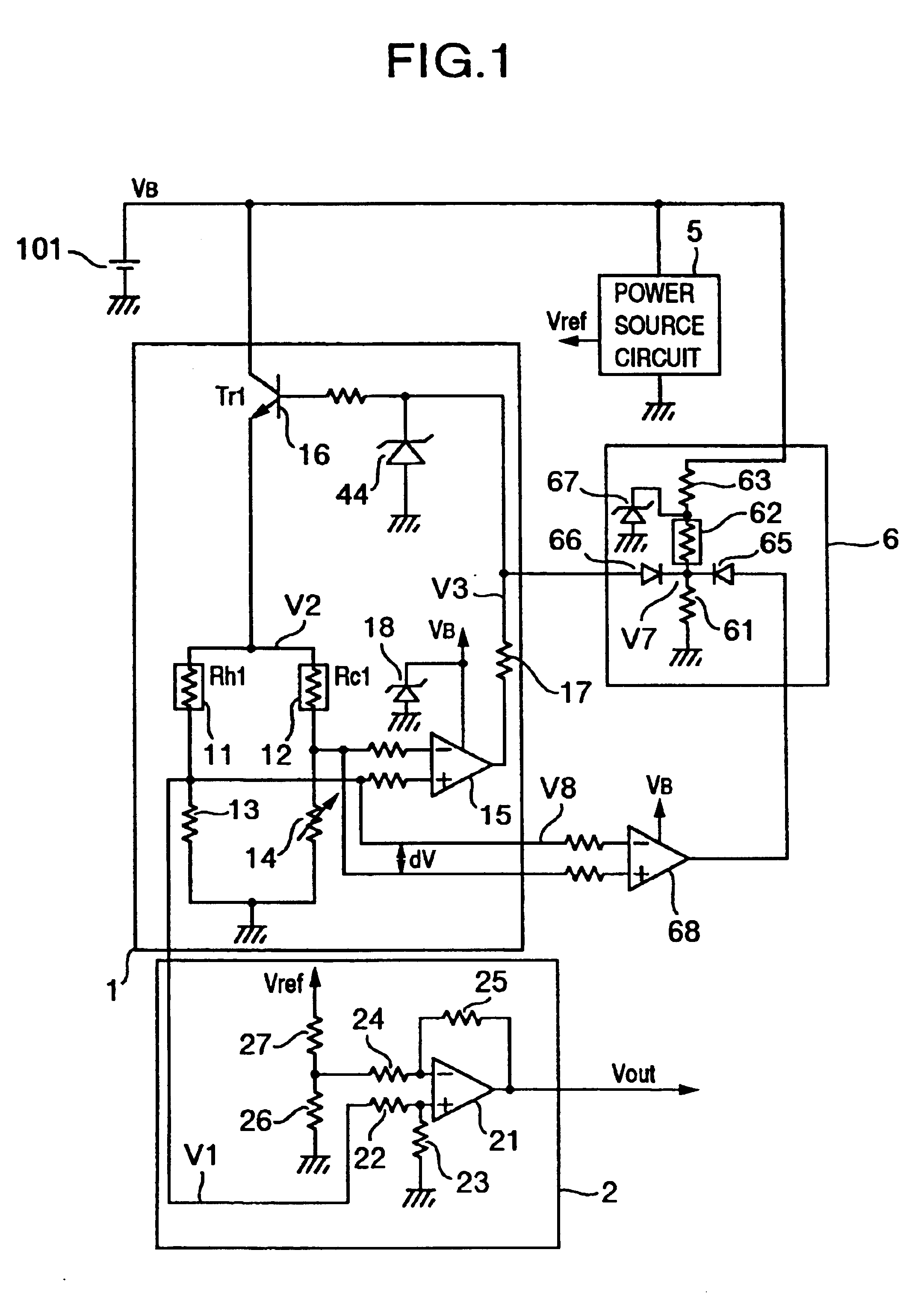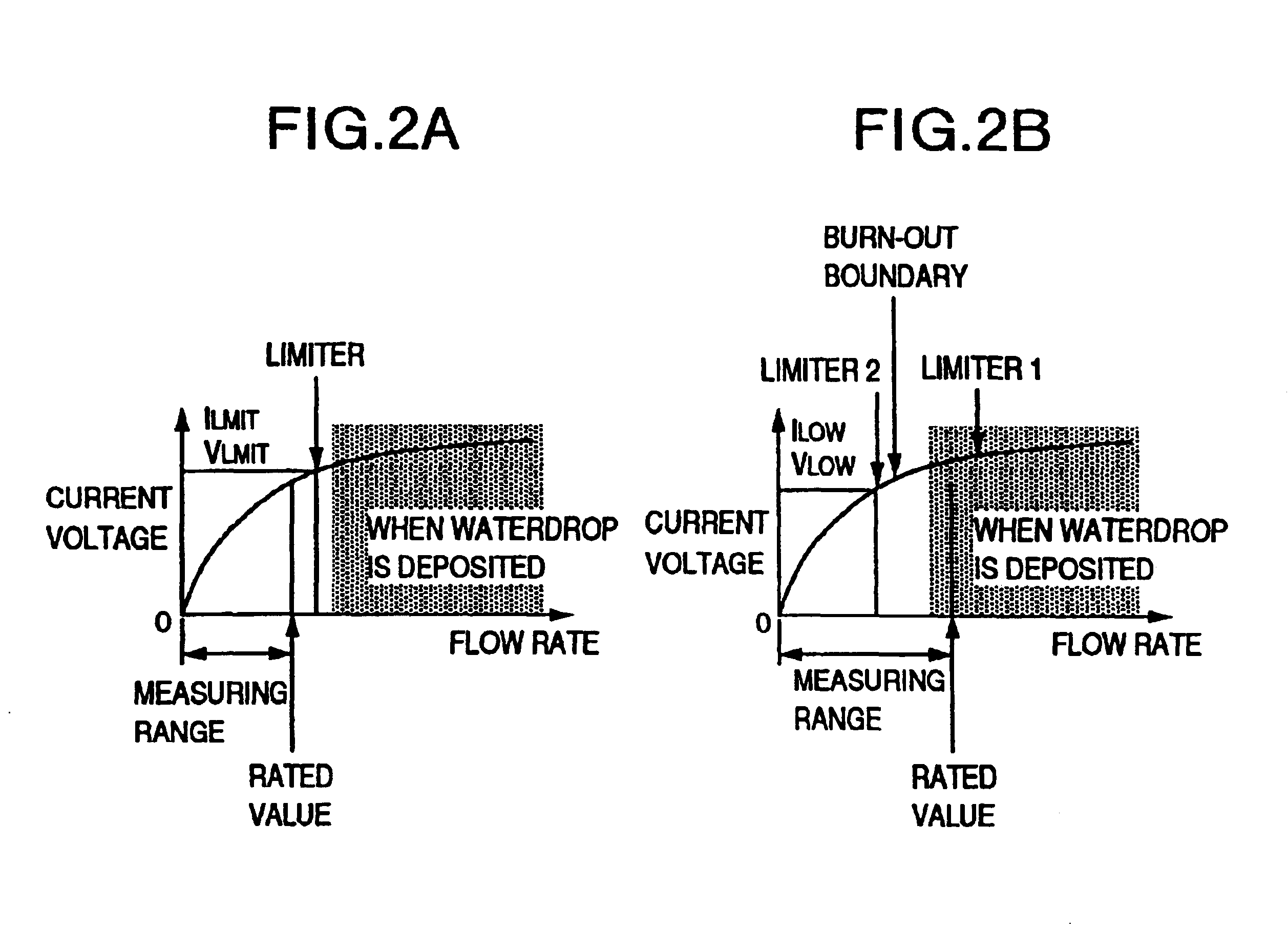Hot-wire type air flow meter for internal combustion engine
a technology of air flow meter and internal combustion engine, which is applied in the direction of fluid speed measurement using thermal variables, electric control, instruments, etc., can solve the problems of exothermic portion, excessive current flow, and time-consuming water drop evaporation, so as to prevent the deterioration of the resistor
- Summary
- Abstract
- Description
- Claims
- Application Information
AI Technical Summary
Benefits of technology
Problems solved by technology
Method used
Image
Examples
first embodiment
An example of a construction of a hot-wire type air flow meter according to the invention will be described hereinbelow with reference to FIG. 1. A hot wire driving circuit I is connected to a power source 101 and generates a signal corresponding to an air flow rate. A hoisten-bridge circuit is constructed by: an exothermic resistor 11; a temperature compensation resistor (a resistor for measuring a suction air temperature, a temperature detecting element of a fluid, a temperature sensor of an air and a medium, a fluid temperature sensing unit, a temperature dependent resistor) 12 as a resistor whose resistance value varies in accordance with an ambient air temperature; and resistors 13 and 14. The hot wire driving circuit 1 is constructed in such a manner that a current flowing in the exothermic resistor 11 is adjusted by a differential amplifier 15 and a transistor 16 so that a potential difference at a middle point of a bridge is equal to zero by the hoisten-bridge circuit. When ...
second embodiment
FIG. 9 shows the second embodiment in case of using such a resistor pattern. The hot wire driving circuit 1 is constructed in such a manner that a current flowing in the exothermic resistor 211a is adjusted by the differential amplifier 15 and transistor 16 so that the potential difference at the middle point of the bridge is equal to zero by a hoisten-bridge circuit constructed by the exothermic resistor 211a, temperature compensation resistor 211c, and resistors 13 and 14.
The resistors 211d, 211e, 211f, and 211g for detecting a temperature construct a bridge circuit by applying a voltage Vcc to a power source circuit 5. As a voltage which is applied to the bridge circuit, it is also possible to form a ratio metric construction using an external voltage. This differential voltage is amplified by a differential amplifier 2131 and resistors 2132, 2133, 2134, and 2137 around a virtual zero point voltage V of, as a center, obtained by dividing a reference voltage Vref by resistors 2135...
third embodiment
the invention will now be described with reference to FIG. 14. A hoisten-bridge circuit based on the constant voltage Vcc driving is constructed by: the exothermic resistor 11; a heating portion of the current detecting resistor 13; a temperature detecting resistor (heating temperature sensor) 111 arranged on the side of the exothermic resistor 11 so as to be mounted on the same substrate as that of the exothermic resistor 11; the temperature compensation resistor 12; and the resistors 13 and 14. The hot wire driving circuit 1 is constructed in such a manner that a current flowing in the exothermic resistor 11 is adjusted by the differential amplifier 15 and transistor 16 so that the potential difference at the middle point of the bridge is equal to zero by the hoisten-bridge circuit. When the heating temperature of the exothermic resistor 11 is low, the output of the differential amplifier 15 increases and the apparatus operates so as to heat more. With this construction, the resis...
PUM
 Login to View More
Login to View More Abstract
Description
Claims
Application Information
 Login to View More
Login to View More - R&D
- Intellectual Property
- Life Sciences
- Materials
- Tech Scout
- Unparalleled Data Quality
- Higher Quality Content
- 60% Fewer Hallucinations
Browse by: Latest US Patents, China's latest patents, Technical Efficacy Thesaurus, Application Domain, Technology Topic, Popular Technical Reports.
© 2025 PatSnap. All rights reserved.Legal|Privacy policy|Modern Slavery Act Transparency Statement|Sitemap|About US| Contact US: help@patsnap.com



